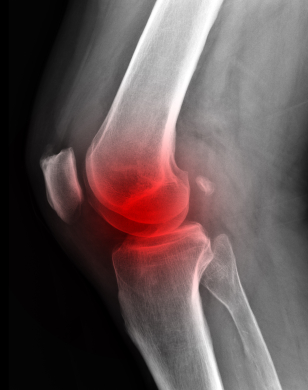Arthritis Treatment
Osteoarthritis (“arthritis”) is a very common condition, affecting 25% of the population over the age of 65. Weight bearing joints in the lower limb are particularly susceptible to arthritis as the weight of the body adds to the biomechanical stresses affecting the joints. Two very common areas for arthritis are the hip and the knee.
Arthritis
There are different forms of arthritis. Some are inflammatory, like rheumatoid arthritis. These types of arthritis are usually genetic and have less to do with “wear and tear”. Your body has decided to “attack” its own joints and inflame them. The more common type of arthritis is not an inflammatory type of arthritis, but rather a “wear and tear” type. This is osteoarthritis…the type that usually affects knees, hips, the lower back and neck (to name a few areas).
Arthritis Risk Factors
There are various risk factors for the development of arthritis. If everyone in your family has experienced arthritis, there’s a good chance you will too. If you’ve had multiple traumas to a joint and have endured a lifetime of strenuous activity (sports or employment) there’s a good chance you’ll develop arthritis in that joint. Interestingly, some research has uncovered some more interesting, less obvious risk factors…
Knee Arthritis and Hip Arthritis
A recent paper published in Foot and Ankle International found a correlation between certain foot-types and joints where arthritis occurred. The authors found those with limited dorsiflexion (the movement of bringing your toe toward your shin) and a high arch in the foot had a trend toward arthritis in the hip. For those with a normal range of motion in the ankle but flat feet there was a trend toward arthritis in the inside of the knee.
Arthritis Diagnosis
Thankfully, another recent study has provided a reliable way for practitioners to measure patients and determine if their foot type and ankle range of motion is abnormal. We can combine this information with other risk-factors for osteoarthritis and tailor a treatment plan accordingly. In other words, if your measurement scores are poor and you already have some risk-factors for the development of arthritis (elderly, female, obese, osteoporotic, history of trauma to the joint, genetics etc.) there’s a good chance you’ll experience some pain at some point. X-rays and blood tests can also sometimes be helpful for the diagnosis of arthritis.
Treatment for Arthritis
There are various treatment options for arthritis. At our clinic in Burlington, we offer treatment through our physiotherapists and our chiropractors. Both practitioners offer laser therapy, which is perhaps the fastest way to get pain relief. For some, the pain doesn’t return for quite some time. For others, strengthening and stretching are the best options, which can be taught to you by our physiotherapist.
If you think you may have arthritis or at risk of arthritis, give us a call. We can offer you advice, direction and a plan for the future. Laser Therapy, Chiropractic, Physiotherapy…we can help!
To learn more about our chiropractors, click here.
To learn more about our physiotherapists, click here.
For further information please contact us…905.220.7858 info@burlingtonsportstherapy.com
References:
Bosomworth NJ. Exercise and knee osteoarthritis: benefit or hazard? Canadian Family Physician 2009; 55: 871-878.
Reilly K, Barker K, Shamley D et al. The role of foot and ankle assessment of patients with lower limb osteoarthritis. Physiotherapy 2009; 164-169.
Reilly K, Barker K, Shamley D et al. Influence of foot characteristics on the site of lower limb osteoarthritis. Foot Ankle International 2006; 27: 206-211.
Disclaimer https://burlingtonsportstherapy.com/blog/disclaimer/









